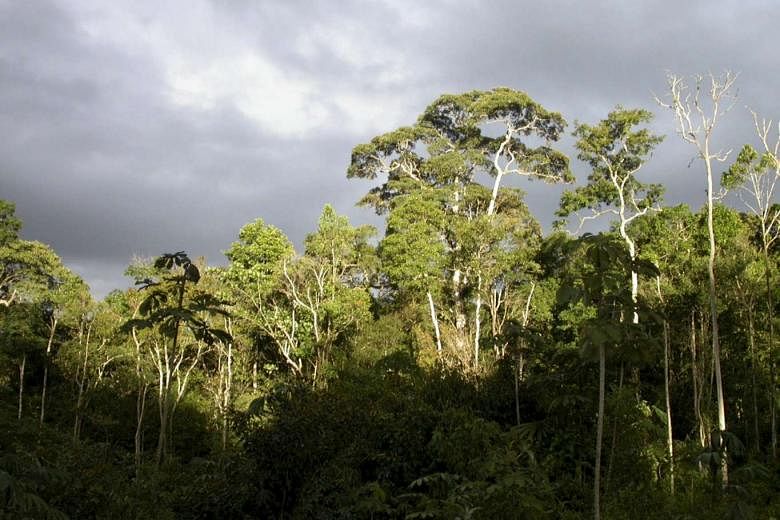MIAMI (AFP) - About half of the 15,000 tree species in the Amazon - the world's most diverse forest - are threatened by deforestation, an international study said on Friday (Nov 20).
The report lays bare the destruction of a vibrant and sprawling ecosystem often referred to as the lungs of the earth because trees absorb carbon dioxide and release oxygen.
"At least 36 per cent and up to 57 per cent of all Amazonian tree species are likely to qualify as globally threatened," said the study in the journal Science Advances, which used criteria from the respected International Union for Conservation of Nature (IUCN).
Under a business-as-usual scenario, about 40 per cent of the original Amazon forest would be destroyed by 2050, the researchers found.
But with stricter conservation measures, they said, that number could be halved.
The good news is that significant populations of endangered trees survive in protected areas of the Amazon, the researchers said.
Still, they added, only constant vigilance over valuable trees like the Brazil nut - 63 per cent of which could otherwise be lost by 2050 - will help preserve the Amazon's status as a major carbon sink, a potent natural asset in helping slow global climate change.
The cacao tree could decline by 50 per cent within 35 years under a business-as-usual scenario, and the acai palm could decline 72 per cent, the study found.
Already, the prized mahogany tree is considered commercially extinct, no longer a part of the Amazon's forest economy.
The report was based on forest surveys across the Amazon as well as maps of current and projected deforestation. Researchers from 21 countries contributed.
"It's a battle we're going to see play out in our lifetimes," said lead author Hans ter Steege of Naturalis Biodiversity Center in the Netherlands.
"Either we stand up and protect these critical parks and indigenous reserves, or deforestation will erode them until we see large-scale extinctions."
The largest part of the Amazon is in Brazil, which last year cut carbon emissions slightly through reduced deforestation, said a separate report by the NGO Climate Observatory.
Still, Brazil's emissions were at the second-highest level in six years.
In Colombia, meanwhile, the government on Friday reported that deforestation is also on the rise - up 16 per cent in 2014 compared to the previous year - particularly in the Amazon region.
The main causes are illegal mining, the felling of trees for farmland or the growing of coca leaves and fires due to drought, said the Institute of Hydrology, Meteorology and Environmental Studies.
About 45 per cent of the 2014 deforestation took place in Colombia's Amazon region, the institute said.

